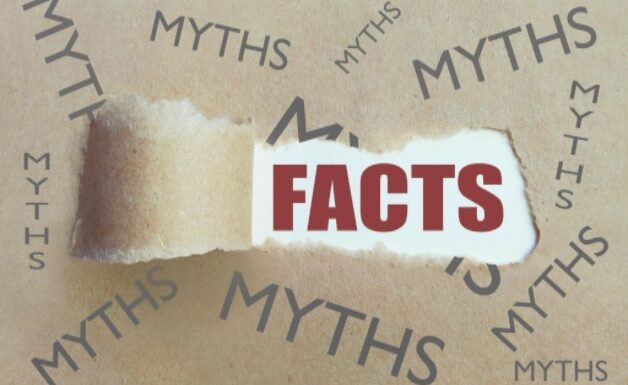
Child sex crimes are serious matters which can bring severe punishments.
Unfortunately, many harmful myths and straight up lies about child sex crime cases persist, muddying the waters when clarity is needed for defendants — defendants who can be helped by our Texas sex crime defense lawyers at the Neal Davis Law Firm.
In this post, we’ll debunk common myths and misconceptions about child sex crimes in America.
Myth #1: Child sex offenders are all men.
Among many the false rumors told about child sex crimes is that all sex crimes against children are committed by males. Though a large majority of sex crimes are committed by males, some are committed by females, especially when the victims are children.
In fact, one study shows that up to 20 percent of all sex offenses against children are committed by women.
Myth #2: Gay people abuse children more.
Another myth is that homosexual men are more likely to sexually abuse children than heterosexual men. Many studies have proven that this rumor is false, yet the myth persists.
The UC Davis, Department of Psychology states:
“Members of disliked minority groups are often stereotyped as representing a danger to the majority’s most vulnerable members. For example, Jews in the Middle Ages were accused of murdering Christian babies in ritual sacrifices. Black men in the United States were often lynched after being falsely accused of raping White women.”
Myth #3: Most sexual abuse of children is from a stranger.
Yet another common myth concerning child sex crimes is that most are committed by strangers.
On the contrary, studies on child sexual abuse show that more than 90 percent of children who are sexually abused are abused by someone they know — perhaps a friend, family member, neighbor or babysitter.
Myth #4: Children never lie about molestation.
An especially dangerous myth is that children wouldn’t claim sexual abuse if none had actually occurred. In many cases, a child may misrepresent or misinterpret facts, or simply make up a story about sexual abuse, perhaps to get attention or to please a parent who is vengeful toward the defendant.
Indeed, adults with ulterior motives toward defendants may be behind false claims of child sex abuse and can coach a child on what to say to substantiate a false claim.
That leads us to a related myth, which is that all reports of child sex crimes and abuse are true. In fact, an estimated 10 percent of reports of child rape or molestation are false. To fight such false claims of child sex abuse, defendants need a knowledgeable Texas sex crime attorney.
Myth #5: Most abuse is violent in nature.
Another myth about child sex crimes is that most such crimes involve force, violence or threats. Research shows that a majority of child sexual abusers gain access to victims through enticement or deception and rarely use force.
Myth #6: Child sex abuse happens most often at playgrounds and schools.
Most people mistakenly believe that child abusers commit their crimes by finding victims on schoolyards or playgrounds. In fact, most abusers know their victims and commit the crime elsewhere.
Myth #7: Sexual activity is allowed if a child gives consent.
An additional myth about child sex crimes is that a child welcomed or allowed the crime by not resisting or saying “no.” This is not a valid defense. Under Texas law a child under age 17 is below the “age of consent” to make legal consent to any sexual activity — regardless of a child’s response.
Myth #8: Once a sex offender, always a sex offender.
Among other myths concerning child sex crimes is that offenders will later offend again.
According to a study reported by ABC News, child molesters had a reconviction rate of 13 percent. In comparison, people who commit a non-sex related offense have a reconviction rate of 37 percent — almost three times higher.
Myth #9: Sexual assaults on children are always committed by adults.
A major myth about child sex assaults or abuse is that all such crimes are committed by adults. In fact, adolescents commit many sex crimes against children.
According to one estimate, as many as 50 percent of all child molestation cases each year involve teens who are 13 to 17 years old committing the act. In addition, prepubescent children are known to engage in sexually abusive acts.
Myth #10: Internet child sex offenders use tricks to assault children.
According to a study published in American Psychologist, the research challenges the common stereotype of internet child sex offenders as deceptive. Instead, it reveals that most internet-initiated sex crimes involve adults openly using the internet to connect and form relationships with underage adolescents.
These offenders typically meet victims through digital platforms, like instant messaging, email, and chat rooms, and are often upfront about their ages and sexual intentions. The majority of victims are aware they are interacting with adults and often expect sexual activity when agreeing to meet.
While deception is less common, when it does occur, it usually pertains to offenders expressing false romantic interests to achieve sexual ends.
Myth #11: Children who use social networking sites have an increased risk of sexual victimization by online predators.
Despite concerns about the potential dangers of social networking sites, investigations, including over 400 interviews conducted with police officers as part of a study on internet-related sex crimes, found no evidence of sex offenders using these sites to stalk or abduct minors based on their posted information, according to the aforementioned study published in American Psychologist.
Data suggests that online interactions that lead to sexual solicitations occur more frequently through instant messaging and chat rooms than through social networking sites. Thus, the risks associated with social networking seem to be comparable to other online activities, and the real vulnerability lies in the nature of the interactions (active versus passive) rather than the medium itself.
Myth #12: All online child sex offenders are pedophiles.
According to the clinical definition by the American Psychiatric Association, pedophiles are individuals who have a primary sexual interest in prepubescent children.
However, most online child sex offenders focus on adolescents, who are more accessible and active on the internet, making it easier to engage with them. Adolescents are also more likely to respond to sexual or romantic overtures due to their developmental stage, unlike younger children who show less interest in such matters.
Myth #13: Sex offender registries reduce sexual assaults.
A study published in the National Criminal Justice Reference Service (NCJRS) Virtual Library analyzed the impact of sex offender laws on rape incidents across 10 states, utilizing data from the FBI’s Uniform Crime Reports spanning from 1990 to 2000.
It found that these laws generally did not affect the number of rapes, with most states showing no significant changes before and after the laws were enacted. While three states did have a decrease in rape numbers, one state experienced a statistically significant increase.
This mixed outcome shows that sex offender registries do not uniformly influence the number of sexual assault incidents, suggesting that further research is necessary to refine approaches that effectively reduce sexual violence.
Myth #14: Hiring a child sex defense attorney makes you look guilty.
With so many misconceptions and myths about child sex crimes, and with such crimes involving serious charges and punishments, it’s vital for anyone accused of a child sex crime to seek help from a skilled and experienced sex crime defense lawyer.
For residents of Fort Bend County, Montgomery County, Houston and the rest of Harris County, that lawyer is Neal Davis. Contact him today for a confidential legal review of your case.
Your future may depend on it.
References
Influence of Sex Offender Registration and Notification Laws in the United States | Office of Justice Programs. (n.d.). Www.ojp.gov. https://www.ojp.gov/ncjrs/virtual-library/abstracts/influence-sex-offender-registration-and-notification-laws-united
Wolak, J., Finkelhor, D., Mitchell, K. J., & Ybarra, M. L. (2008). Online “predators” and their victims: Myths, realities, and implications for prevention and treatment. American Psychologist, 63(2), 111–128. https://doi.org/10.1037/0003-066x.63.2.11

